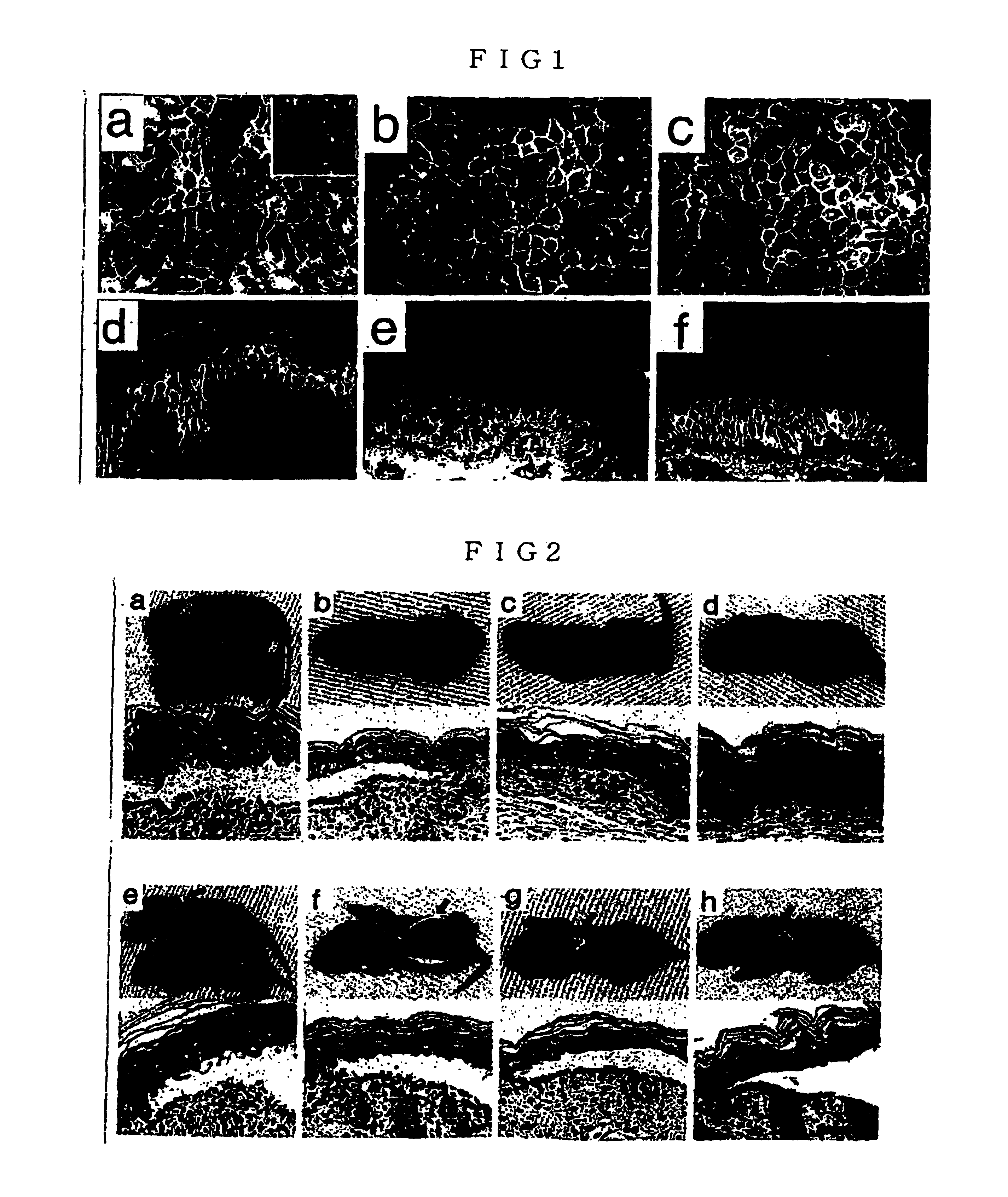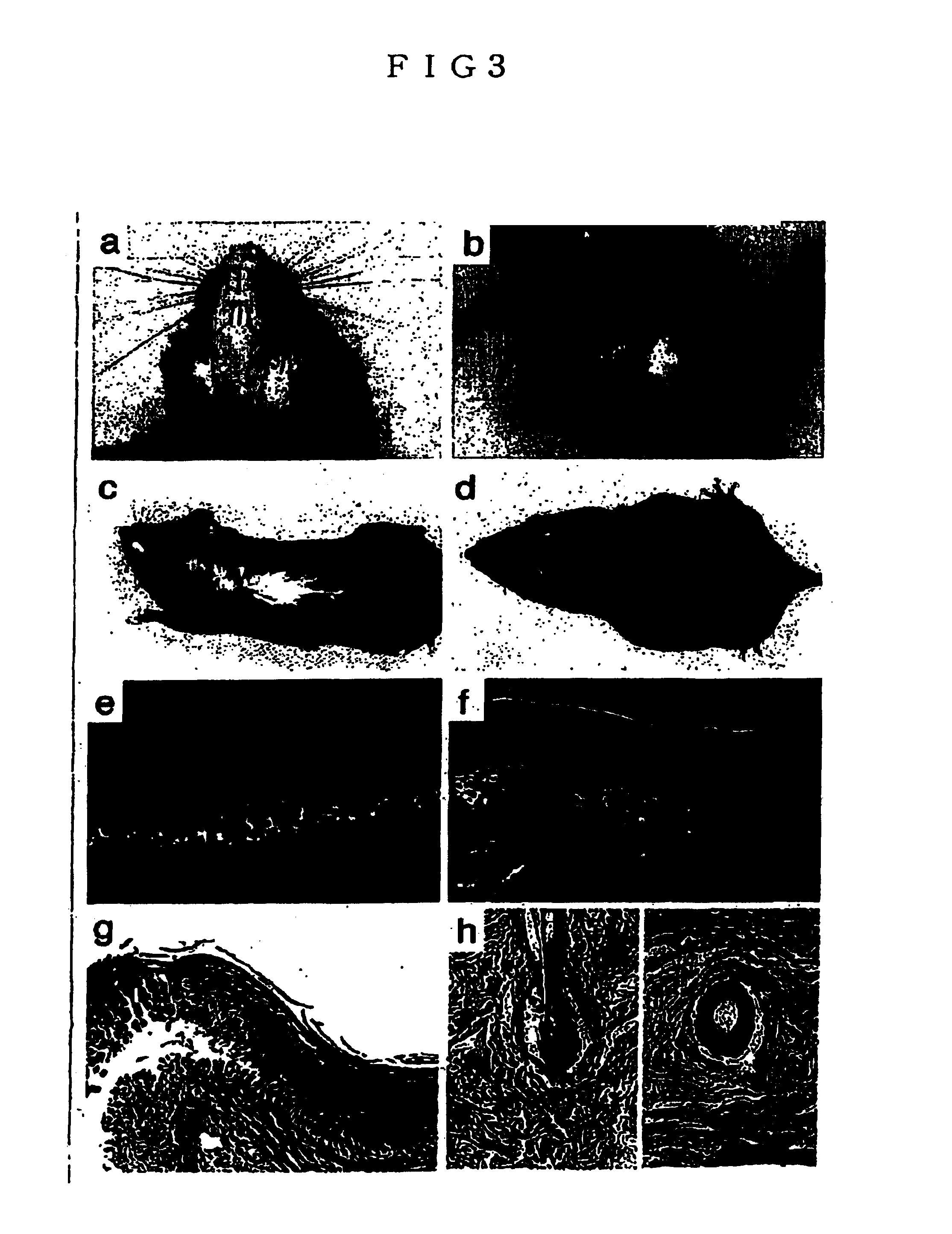Pemphigus monoclonal antibody
- Summary
- Abstract
- Description
- Claims
- Application Information
AI Technical Summary
Benefits of technology
Problems solved by technology
Method used
Image
Examples
example a
Method and Material
A-1 (Construction of rDsg3 Antigen Protein and ELISA)
[0028]The baculovirus vectors, pEVmod-Dsg3-His and pEVmod-Dsg1-His, pEVmod-mouse Dsg3-His and pEVmod-mouse Dsg1 -His, that were constructed according to the method as described previously (J. Immunol. 159, 2010-2017, 1997) were used. These recombinant baculoviruses were infected to insect cells, High Five (Invitrogen Corporation), then the recombinant protein human Dsg3-His and Dsg1-His, recombinant protein mouse Dsg3-His and Dsg1-His were collected from the culture media, respectively. In addition, purification of these recombinant proteins was conducted using Ni-NTA column. These purified recombinant proteins were coated on ELISA (Enzyme Linked Immunosorbent Assay) plates, respectively, 50 μl each of the culture supernatant of the anti-Dsg3 monoclonal antibody-producing hybridoma was added to each well, and ELISA was practiced according to the method as previously described (J Clin Invest 105, 625-631, 2000). ...
example b
Results
B-1 (Reactivity of Monoclonal Antibodies)
[0044]The PV mouse model with an active disease can induce loss of cell-cell adhesion of keratinocytes, thereby having a circulating anti-Dsg3 IgG antibody that forms blisters. The present inventors used this PV mouse model as a supply source for developing anti-Dsg3 IgG monoclonal antibody. The present inventors produced hybridoma cells from the splenocytes of these mice. First, for these hybridoma cells, recombinant Dsg3 obtained from the baculovirus expression system were used for screening with ELISA, and for positive clones, screening was further performed by living keratinocyte staining using mice keratinocyte PAM212 cells (FIGS. 1a, 1b and 1c). In the screening for the second time, antibodies capable of binding to native Dsg3 at the surface of keratinocytes in vivo were selected, and 8 different clones were isolated (Table 3). The isotypes of these monoclonal antibodies were all IgG1 for H chain and K for L chain.
[0045]ELISA met...
PUM
 Login to View More
Login to View More Abstract
Description
Claims
Application Information
 Login to View More
Login to View More - R&D
- Intellectual Property
- Life Sciences
- Materials
- Tech Scout
- Unparalleled Data Quality
- Higher Quality Content
- 60% Fewer Hallucinations
Browse by: Latest US Patents, China's latest patents, Technical Efficacy Thesaurus, Application Domain, Technology Topic, Popular Technical Reports.
© 2025 PatSnap. All rights reserved.Legal|Privacy policy|Modern Slavery Act Transparency Statement|Sitemap|About US| Contact US: help@patsnap.com



